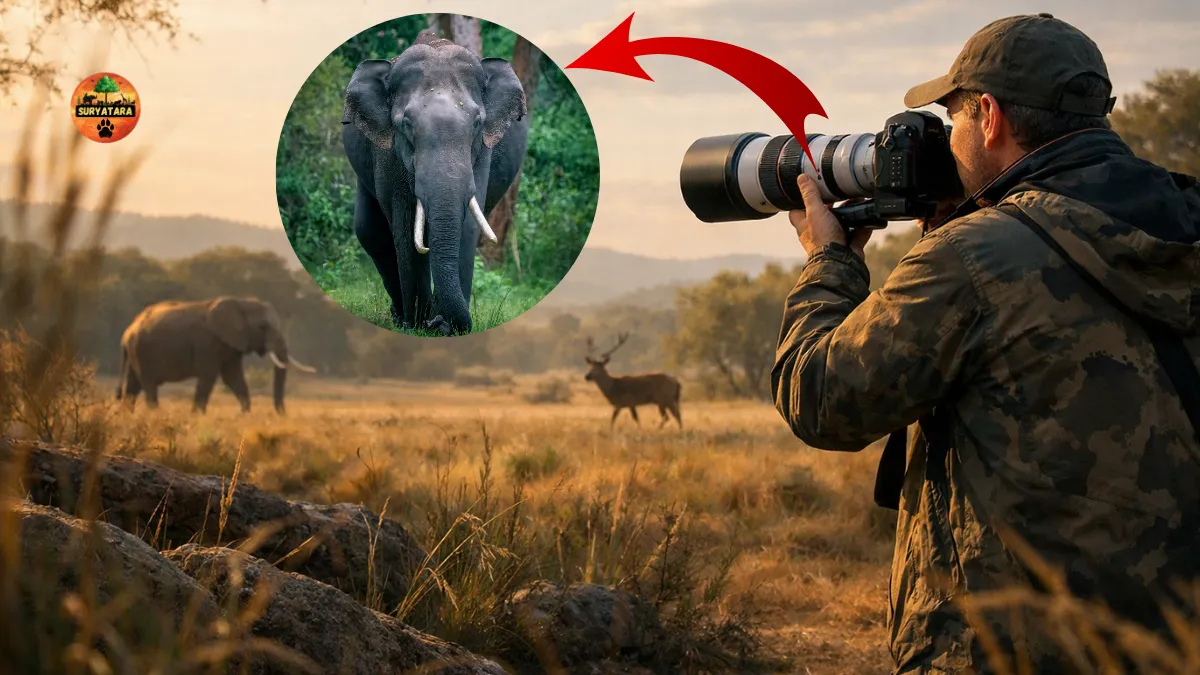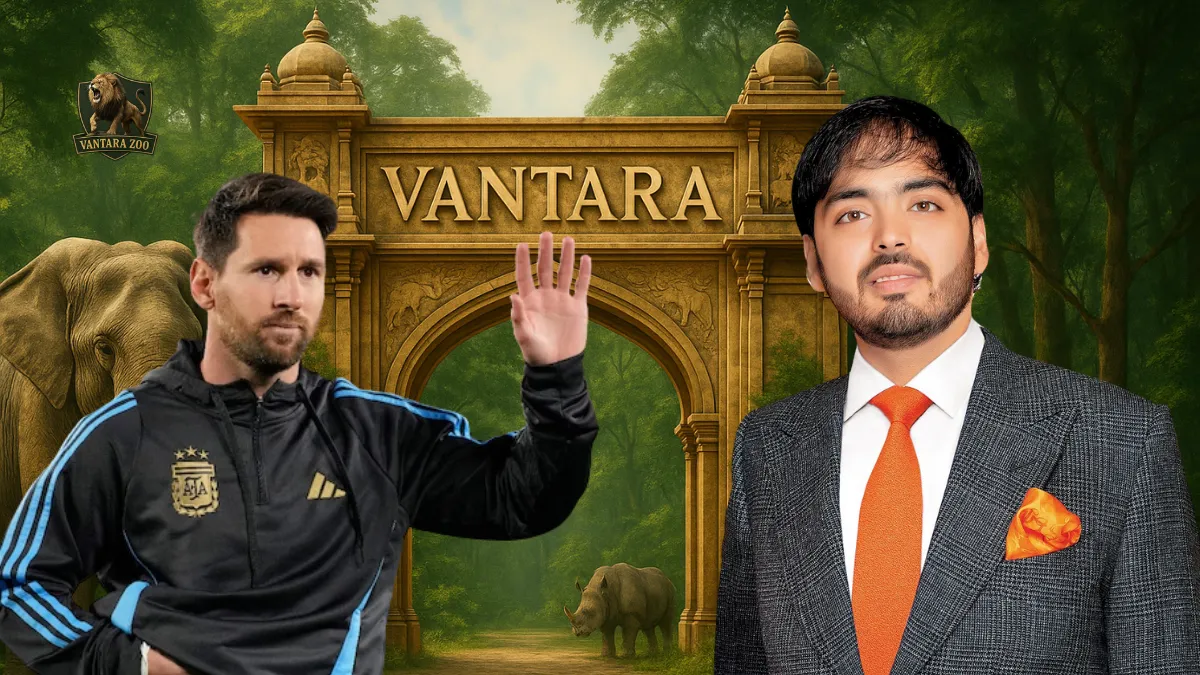On August 3, 2025, thousands of people in Kolhapur took to the streets in a silent protest, demanding the return of Madhuri Elephant, also known as Mahadevi, who was recently relocated to the Vantara Wildlife Rehabilitation Centre in Jamnagar, Gujarat. This peaceful yet emotional rally highlighted the deep connection between the local community and the elephant, bringing to light the complex issues surrounding animal welfare, religious traditions, and legal mandates.
Who is Madhuri Elephant and Why is She So Special?
Madhuri Elephant has been a revered figure in Kolhapur’s religious and cultural life for over three decades. Since 1992, she has been part of the Swasthishri Jinsen Bhattarak Pattacharya Mahaswami Sanstha, a prominent Jain math. Her participation in religious processions and temple rituals made her a beloved symbol of spiritual blessings among devotees.
However, concerns regarding her treatment and living conditions have been rising in recent years. Reports indicated that Madhuri was often kept in isolation, made to participate in public events despite health issues, and allegedly used for commercial purposes. These issues eventually led to a series of legal interventions, resulting in her relocation to Vantara, a facility known for rehabilitating elephants with proper medical care and natural living environments.
The Silent Protest: Kolhapur’s Emotional Appeal
The protest march began at 5 a.m. from Nandani and concluded at the Kolhapur District Collectorate by 5:45 p.m., covering a distance of 45 kilometers. Former MP and Swabhimani Kisan Sangathan leader Raju Shetty spearheaded the movement, with over 30,000 people from Kolhapur, Sangli, and Satara districts participating in solidarity.
The protesters expressed their displeasure not only through the march but also by boycotting Reliance Group’s telecom service, Jio. Reports indicated that over 1.5 lakh users had switched to other networks in just four days as a mark of protest. The demonstrators alleged that organizations like PETA, under corporate influence, were targeting temple elephants in the guise of animal welfare.
Raju Shetty went on to accuse PETA of acting as a puppet for Anant Ambani, founder of Vantara and son of industrialist Mukesh Ambani, claiming that this was a conspiracy to take control of temple elephants nationwide.
Legal Proceedings: High Court Upholds Welfare Priority
The relocation of Madhuri Elephant was not a unilateral decision by any NGO. On July 16, 2025, the Bombay High Court dismissed a petition filed by the Jain math challenging Madhuri’s transfer to Vantara. The court’s decision was based on thorough reports highlighting the elephant’s deteriorating health and inadequate living conditions.
Veterinary inspections revealed multiple health issues, including severe foot rot, ulcerated wounds, overgrown toenails, and signs of psychological trauma. Despite the math submitting certificates claiming improvements in Madhuri’s health, the court found these documents insufficient and contradictory to photographic and medical evidence.
The court ruled that religious sentiments could not justify neglecting an animal’s welfare, emphasizing that Madhuri’s well-being must take precedence over traditional customs. This decision was further upheld by the Supreme Court of India on July 28, 2025, which mandated her transfer within two weeks.
Vantara’s Response: Addressing the Allegations
Amid growing public unrest, Vantara released an official statement to clarify its position regarding Madhuri Elephant’s relocation. Vantara stated that it had no role in initiating or requesting the transfer. The decision was made solely by the High Powered Committee (HPC) under the Ministry of Environment and Forests, following a comprehensive complaint submitted by PETA.
According to Vantara, PETA had been monitoring Madhuri’s condition since 2022. On October 31, 2023, PETA filed a detailed complaint with the HPC, including veterinary reports, photographs, and evidence of Madhuri’s physical injuries, psychological distress, and commercial exploitation.
Between 2012 and 2023, Madhuri Elephant was reportedly transported 13 times between Maharashtra and Telangana, often without the necessary permits from the Forest Department. One particular incident in January 2023 led to a wildlife offence case being registered against the elephant’s mahout, B. Ismail, by the Telangana Forest Department. Though the offence was later settled by paying a fine, it highlighted repeated violations of wildlife protection laws.
Exploitation and Welfare Concerns: The Reality Behind the Transfer
The complaint also mentioned that Madhuri was frequently used in public parades, processions, and even for begging. She was made to lift children with her trunk and was controlled using banned metal ankushes. Shockingly, it was also reported that the math was auctioning the opportunity for devotees to perform rituals with Madhuri, effectively commercializing her presence.
A tragic incident in 2017, where Madhuri accidentally caused the death of the head priest of the math, further intensified concerns about her safety and the need for proper care.
In August 2023, a team of government-appointed veterinarians inspected Madhuri and found open wounds, footpad thinning, and behavioral signs of distress. Following this, in October 2023, a detailed medical report by Dr. Rakesh Chittora from Animal Rahat recommended immediate hospitalization and rehabilitation. The report also highlighted that the mahout lacked basic knowledge of elephant care.
Despite being given a three-month period to improve Madhuri’s condition, follow-up inspections in June and November 2024 revealed that the underlying issues persisted. Consequently, the HPC passed an order on December 27, 2024, directing Madhuri’s relocation to the Radhe Krishna Temple Elephant Welfare Trust (RKTEWT) in Jamnagar, which has advanced facilities for elephant care and rehabilitation.
Emotional Backlash vs. Legal Compliance: The Tug of War Continues
Despite the court orders and the extensive documentation of Madhuri Elephant’s suffering, the decision has not been well-received by the local community. For many, Madhuri’s presence at the Jain math holds deep spiritual significance, and her absence feels like a cultural loss. Political leaders, including BJP MP Dhananjay Mahadik, have appealed to the Union Environment Ministry to reconsider the decision.
Vantara, in its statement, expressed regret over the misinformation campaigns aimed at discrediting the organization. The statement emphasized that Vantara had only complied with judicial and regulatory orders and had no involvement in the proceedings that led to Madhuri’s transfer.
“When the country’s highest courts have thoroughly examined the evidence and made a ruling, continuing to target a neutral entity that has merely followed legal directives undermines the sanctity of the judicial process,” the statement read.
Also read: Madhuri elephant: The Emotional Battle Between Tradition and Wildlife Welfare
Moving Forward: Is a Middle Ground Possible?
As the next compliance hearing is scheduled for August 11, 2025, the debate over Madhuri Elephant’s future remains highly sensitive. While legal authorities have underscored the need for her rehabilitation, the public sentiment in Kolhapur cannot be ignored.
Animal welfare experts argue that traditions must evolve to ensure ethical treatment of animals. They advocate for constructive dialogue between the community and conservation bodies to create solutions that respect both cultural values and animal rights.
Also read: Madhuri Mahadevi Elephant Controversy – A Heartfelt Movement to Bring Her Back to Kolhapur
Conclusion
The saga of Madhuri Elephant is more than just a legal case about relocating an elephant; it represents a broader debate between tradition, faith, and the ethical treatment of animals in modern India. While the judiciary has firmly stood on the side of Madhuri’s welfare, the emotional protests from Kolhapur highlight the need for greater empathy and community involvement in conservation efforts.
As Madhuri adjusts to her new life in Vantara’s care, it is crucial that all stakeholders come together to ensure that cultural sentiments and animal welfare coexist in harmony. Only through understanding and dialogue can such conflicts be resolved for the betterment of both communities and the animals they revere.










